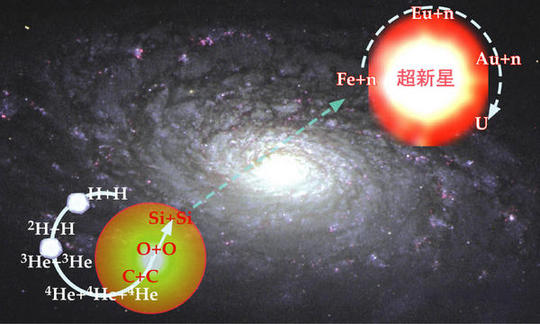
Evolution of first stars and origin of elements
The objective of this project is to construct a quantitative model to describe the dynamical and chemical evolution of galaxies. Quasars at cosmological distances emit photons including information on the early universe. In addition, there are many stars older than the sun in our galaxy. Emissions of these stars also contain fossil information on the galaxy when these stars formed. In particular, emissions both from quasars and old stars encode fruitful information on how elements were synthesized by nuclear fusion operating in stars. In our project, we will simulate the evolution of galaxies by numerical models. The processes to be calculated include the formation of galaxies in the early universe, the evolution of the first stars formed from the gas with the primordial elemental abundances, supernova explosion, the subsequent evolution of a supernova, the formation of stars of the next generation, and the recycle of these processes. By comparing results of the simulations with information in emissions from quasars and old stars, we will explore the origin of elements in the universe. Through these studies, we will learn how a supernova explodes and differences between nearby celestial objects and those at cosmological distances. It will help to probe the geometry of the universe with distant supernovae, for example.




